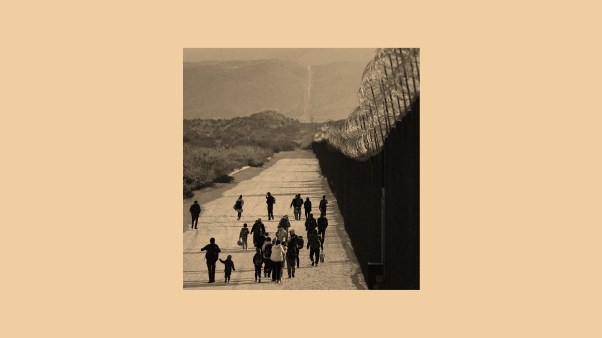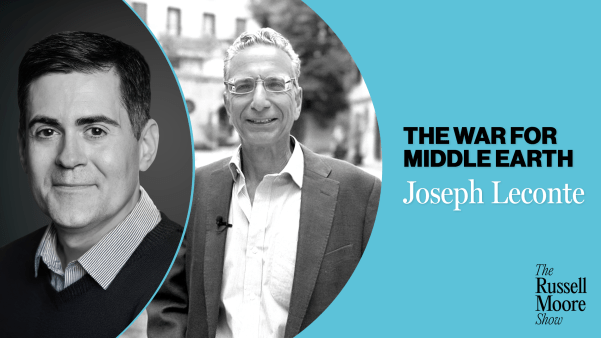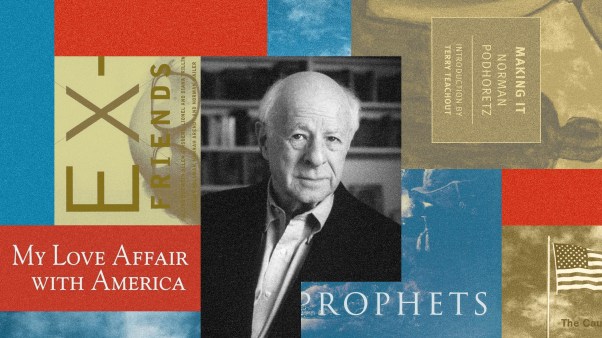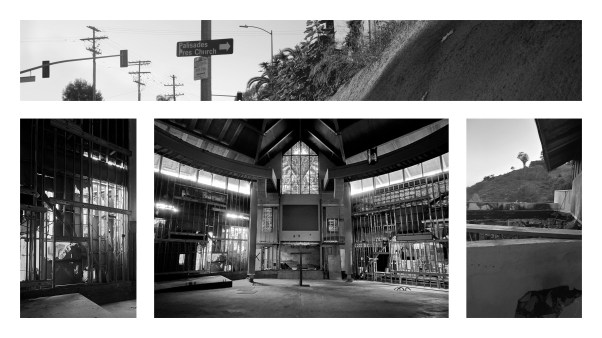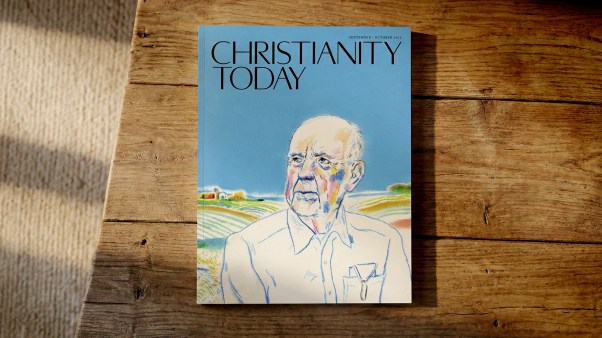If we are to work out an effective missionary strategy for mainland China, we need to understand the Chinese Communist mind from the biblical point of view. And to do this, we must first consider the biblical teaching about the mind.
According to the Bible, man was created in the image of God. If we use the categories of ancient thought and describe the mind in terms of intellect, will, and emotion, we see God’s image reflected in it as knowledge, righteousness, and true holiness (Col. 3:10; Eph. 4:24). Man was to have dominion over the world, under God, as a prophet, king, and priest. Since the fall, the image has been corrupted. Man’s mind still functions as intellect, will, and emotion, but no longer exhibits true knowledge, righteousness, or holiness.
God’s cultural mandate to Adam in the Garden of Eden is “to dress it and to keep it” (Gen. 2:15). This twofold mandate represents both a progressive and a conservative principle in the human mind and reflects the twofold work of God in the creation and preservation of the world.
God reveals himself in the Bible as a triune God—Father, Son, and Holy Spirit. Within the Godhead there are two relationships: the Father eternally begets the Son, and the Holy Spirit proceeds from the Father through the Son. These two relationships are reflected in the world in God’s creative work and his providential direction of history. In the history of salvation we see both the work of Christ and that of the Spirit: justification and sanctification. Understanding these two relationships and principles will help us understand the Chinese mind, the Communist mind, and the Chinese Communist mind.
The Chinese Mind
The Bible teaches that the mind of fallen man is inadequate to know God truly through general revelation alone, and requires God’s special revelation in his Word; even this special revelation cannot be correctly understood apart from redemption in Jesus Christ and the work of the Holy Spirit. Nevertheless, although they are sinners, men retain many of God’s creation gifts, and through the action of common grace in nature and in history they are able to accomplish much. Thus the Chinese mind, in the light of God’s general revelation, was able to develop two of the highest forms of humanistic culture in Confucianism and Taoism.
Not knowing the true God, the Chinese mind conceives ultimate reality as the Absolute, Tai Chi, which can be known only through its two operating principles, Yin and Yang, the negative and the positive. The operation of these two basic principles in nature and in history is also called the Way, Tao, which maintains its harmony through all kinds of change and conflict. Thus the Chinese mind yearns for an ideal harmony and unity between man and nature, between mind and matter, between knowledge and action.
Looking for harmony and unity in the midst of changes, the Chinese mind along ago developed the idea of China the Beautiful and China as the Middle Kingdom, the center of the world. In its political manifestation, the one who truly knows the Way, the Tao, has the Mandate of Heaven and becomes the Son of Heaven, the Emperor, to rule over the Middle Kingdom and the Empire. Those who help the Emperor to rule are the spiritual sons of the Emperor, chuntzu or gentlemen. However, if an Emperor misrules his people and loses the Mandate of Heaven, another person may receive a new Mandate, rise up, and become the new Emperor, beginning another dynasty in the series of dynastic cycles.
This series was finally broken with the overthrow of the last dynasty in 1911. Before that, China had suffered a series of defeats by the Western powers and Japan, beginning with the Opium War in 1839. Since then the Chinese mind has had not only a superiority but also an inferiority complex. Without this basic understanding of the Chinese mind, one can hardly understand the Chinese Communist mind.
The Communist Mind
The Communist mind in the West is part of the development of the modern world as it has cut itself away from Christianity. The philosopher Immanuel Kant (1724–1804) made God into a limiting concept and a postulate instead of a personal being and the Creator of the world. Following Kant in the rejection of the Creator-creature distinction was G. F. W. Hegel (1770–1831), who replaced the personal God of Scripture with the Absolute Spirit. The world is not created, but is the self-fulfillment of this Spirit in history through a dialectical process. Karl Marx (1818–83) turned the dialectic of Hegel upside down and developed his so-called scientific and historical dialectical materialism, in which it is matter, not Spirit, that fulfills itself: material forces create all supposedly spiritual realities such as philosophy and religion.
Marx understands the basic nature of reality as purely material, manifesting itself through the dialectical process of thesis, antithesis, and synthesis. Through an evolutionary process, life evolved from matter and human beings evolved from animals. The determining factors in society and history are the material forces of economic production. Marx holds that at the beginning of human history there was a primitive classless society. Somehow men became selfish and turned property, originally held in common, into private property. As a result, human society has become divided into two or more classes that struggle to control property and government. The material basis of the society determines its superstructure. Class struggle is then the moving force of history which has gone through serfdom, feudalism, and capitalism and will usher in Communism as a higher form of classless society.
Marx predicted that the overthrow of capitalism and the Communist revolution would take place in the more advanced industrial nations. However, this did not happen, and Lenin reinterpreted Marxism, applying it to the world situation during World War I to bring about the Russian Revolution. Leninism has thus become a vital part of the Communist mind alongside Marxism. In fact, Marxism-Leninism is the foundation for the Chinese Communist mind, which applies Marxism-Leninism to the Chinese situation.
The Chinese Communist Mind And Mao’S Thought
1. The Russian Revolution and the formative years of the Chinese Communist mind (1917–24). Marxism-Leninism is a modern missionary movement in that it aims at world revolution and is a perversion of the Christian Gospel. Right after the Russian Revolution, Lenin organized the Third Communist International and sent representatives to China to help organize the Chinese Communist party. At the time of the Russian Revolution there was a new cultural movement going on in China under the influence of Hu Shih, a disciple of John Dewey. The two watchwords of this movement were science and democracy. However, soon the agents of the Third International won over Chen Tu-hsui of Peking University, who for some time was a close friend of Hu Shih in the new cultural movement. They also won over Li Ta-chao, a professor as well as the librarian at Peking University. Li gave Mao Tse-tung a job at the library in the fall of 1918. Chen and Li were the co-founders of the Chinese Communist party in 1921, and Mao was one of the founding members. In the formative years of the Chinese Communist mind, Li was more a nationalist and Chen an internationalist. Mao learned from them both and gradually developed his own understanding of Marxism and Leninism.
2. The United Front and Nationalist-Communist co-operation (1924–27). The Nationalist party was founded and reorganized several times under the leadership of Dr. Sun Yat-sen. Sun had overthrown the Manchu dynasty in 1911 but had yielded the presidency to the warlord Yuan Shih-kai, who later became emperor in Peking and died in 1916. This period of warlordism forced Sun to establish a rival republican government in Canton. Sun wanted to unify the nation in 1924, and he reorganized the Nationalist party to allow the Communists to join as individuals, creating in effect a Nationalist-Communist united front. But Lenin died early in 1924 and Sun died in the spring of 1925. The subsequent struggle for power in Russia and China changed the nature of this early United Front and affected the Chinese Communist mind. Li was killed by a warlord in Peking and Chen was purged by the party. Gradually Mao established a “Red Base” and developed his ideas of guerrilla warfare and revolution.
3. The revolutionary civil war and the Long March (1927–35). A year before the civil war broke out between Nationalists and Communists, Mao noticed that there was “right” and “left” opportunism within the Chinese Communist mind, and that the peasants were not being given due weight in the Chinese Revolution. In an article entitled “Analysis of the Classes in Chinese Society” Mao asked: “Who are our enemies? Who are our friends? This is a question of first importance to the revolution.… To distinguish real friends from real enemies, we must make a general analysis of the economic status of the various classes in Chinese society and of their respective attitudes towards the revolution.” From his analysis of these classes, Mao formulated the doctrine of the United Front to win friends and defeat enemies. The Communist party, the Red Army, and the United Front with non-Communist friends constitute the dynamics of revolution. However, Mao’s Red Army suffered a series of defeats and escaped final disaster only by fleeing Nationalist encirclement and trekking several thousand miles on the “Long March” in 1935. The Long March taught Mao and others the meaning of suffering. This further shaped the Chinese Communist mind, impressing it with the conviction that suffering and revolutionary experience are the marks of a true community.
4. The Second United Front and Mao’s early thought (1936–45). After the Long March, Mao settled in Yenan and began to work out the second United Front against the imminent invasion by Japan. The Sian Incident late in 1936 and the Japanese invasion in 1937 gave the second United Front a golden opportunity to attract the intellectuals, the youth, and many others. It also gave Mao time to formulate his thought in two most important articles, “On Practice” (July, 1937) and “On Contradiction” (August, 1937). These have become the foundation of his thought. Following Lenin, Mao insisted that practice is higher than theoretical knowledge and sought a unity of theory and practice in a practical theory. Mao also hinted at the distinction between antagonistic contradiction and non-antagonistic contradiction that developed fully in his later thought (1957). Mao employed the Marxist method to study Chinese history and wanted to “sum up our history from Confucius to Sun Yat-sen and take over this valuable legacy” (The Role of the Chinese Communist Party in the National War, 1938). Gradually Mao came to aspire to the role of a new Chinese Confucius in the modern world.
5. The final revolutionary civil war and the People’s Republic of China (1945–49). Toward the end of World War II, Mao held the Seventh Party Congress. Liu Shao-chi, then Mao’s right-hand man, wrote the preamble of the party rules, stating: “The Chinese Communist party takes the theories of Marxism-Leninism and the unified thought of the practice of the Chinese Revolution, the thought of Mao Tse-tung, as the guideline for all of its actions.” This was the first time that the expression “thought of Mao” was used officially; it has since become a special term. With the victory over the Nationalist party and the establishment of the People’s Republic of China in 1949, Mao made his first trip to Russia and learned some hard lessons from Stalin. However, Mao and China were still too weak to break away from the “lean to one side” policy of close dependence on the Soviet Union. In fact, China was very soon trapped into the Korean War.
6. The Korean War and the First Five-Year Plan (1950–57). The Korean War greatly affected the infant People’s Republic and the Chinese Communist mind. China was at war with the United States and the United Nations. The problem of Taiwan, of U. S. recognition of China, and of Chinese admission to the United Nations remained insoluble for twenty years. On the other hand, Mao had to attempt a first Five-Year Plan based on the Russian model with emphasis on heavy industry and reliance on Russian aid. After Stalin’s death in 1953 and Khrushchev’s de-Stalinization in 1956, Mao gradually rethought his relationship to Russia. In his second trip to Russia for the fortieth anniversary of the Russian Revolution (1957), he declared that the East Wind would prevail against the West Wind, signaling the eventual break between China and Russia.
7. “Contradictions among the people” and the Great Leap Forward (1958–60). Being disappointed with the Russian model and having found many contradictions—i.e., antagonisms and conflicts—among the Chinese people even after a few years of Communist rule, Mao gave a long address in February, 1957, “On the Correct Handling of Contradictions Among the People.” Once more, Mao distinguished friends and enemies and pointed out that there were many non-antagonistic contradictions within the nation that could and should be resolved by peaceful means. Mao also wanted to outstrip Russia in accomplishing Communism. His methods included the establishment of communes of all kinds and the simultaneous rather than successive development of basic industries in the “Great Leap Forward” technology. Accusing the Russians of revisionism and of being on the road to a restoration of capitalism, Mao advocated permanent revolution. But the Great Leap Forward ended in partial failure, and Mao was forced to give up the chairmanship of the state to Liu Shao-chi in 1959.
8. Retreat and revisionism under Liu Shao-chi (1961–65). With the Sino-Russian split and the gradual schism within the Chinese Communist leadership, the Chinese Communist mind was divided between the revisionism of Liu and the radical thought of Mao. This split affected China’s development in the second decade of the People’s Republic and gave rise to much speculation about the future of China. In the meantime, Mao mapped out another strategy to recapture and reform the Chinese Communist mind.
9. Mao’s later thought and the Great Proletarian Cultural Revolution (1966–). The Great Proletarian Cultural Revolution is the natural and logical outcome of the idea of continuous, permanent revolution applied to the party and the people. It has both an ideological aspect and a power-struggle aspect. It used the Red Guards to overthrow Liu Shao-chi and others and make them participate in the revolutionary experience with sufferings and long marches and constant immersion in the Red Book of Mao’s Thought. It tries to transform the human nature with thought reform, discussion, criticism, and self-criticism. It is a thoroughly consistent form of humanism, teaching salvation by work. It also promotes the cult of Mao, making him the savior of China and eventually of the world.
10. The Chinese Communist mind after Mao’s death. Mao has been a sick, old man during the last few years. Is the Chinese Communist mind also sick? What will it be after his death? The world is intensely interested in these questions.
A Christian Evaluation
From the Christian viewpoint, man’s basic problem is that of his relation to God. As a non-Christian, Mao sees man’s basic problem in terms of his theory of contradiction. Actually the problem of contradiction is the problem of sin, of man’s disobedience to the will of God. Once man had disobeyed God, all kinds of contradiction resulted between God and man and among men. God’s solution to sin was to send to the world his only-begotten Son, Jesus Christ, to atone for the sins of his people. Jesus as a man of sorrows learned “obedience by the things which he suffered” (Heb. 5:8). The suffering of Christ and his death and resurrection have solved the problem of sin and death for those who put their trust in him. Man is saved by grace alone, both in his justification and in his sanctification, i.e., in the new birth and in spiritual growth.
Mao’s distinction between antagonistic and non-antagonistic contradictions is a non-Christian way of trying to solve the problem of sin with human means. Mao wants to defeat China’s enemies and overcome the antagonistic contradictions by military revolution and wars of liberation and to resolve non-antagonistic contradictions among the people and their friends by thought reform in the continuous, permanent revolution. Mao realizes the seriousness of the non-antagonistic contradictions, which must be resolved through thought reform, criticism, and rational means. This means that to become a true and good Communist one has to overcome contradictions in a continuous process of “sanctification” so that one’s nature may finally be transformed according to the image and thought of Mao. Mao also believes that suffering is the key to the problem of human nature, and he would have all the people and friends participate in revolutionary experience and suffering. If the Chinese people are willing to suffer long enough, he believes, they will become qualified to lead the people of the world into the promised land of world communism.
Seen from the Christian point of view, the Chinese Communist mind and Mao’s thought constitute the most dangerous variety of humanism ever conceived. It is a very consistent system of the Anti-Christ, and it can be overcome only by Christ himself, through the grace of God.
Toward A Missionary Strategy
Western missionaries had the opportunity to preach the Gospel of Christ to the Chinese people long before there was any Chinese Communist mind or any thought of Mao. However, the Christian message did not penetrate China sufficiently to challenge the Chinese mind and its humanism. After China had suffered several defeats, it began to look for an ideology to help it recover from humiliation. There was an emptiness in the Chinese mind for more than a century. Satan used the Communist mind from the West to fill this empty and humiliated Chinese mind and to transform it into the Chinese Communist mind by means of Mao’s thought. It is the greatest disaster in the history of China, and, by its consequences, perhaps of the world.
Since Mao has ruled China for more than twenty years and has shaped the thought of 800 million people—a quarter of the total population of the world—into the Chinese Communist mind, the Christian Church must face this greatest of challenges squarely and seriously. To condemn Mao’s thought and the Chinese Communist mind without adequately understanding them is to shrink from Christian responsibility. To hope to reenter mainland China without sufficient preparation and training is wishful thinking. To hate the Chinese Communists simply because they are Communists is beneath the dignity of Jesus Christ and his Gospel. To love our enemies and pray for them and to be ready to encounter the Chinese Communist mind with the Gospel of Jesus Christ, even in suffering, should be our constant desire.
Non-Chinese Christians and Chinese Christians outside China should unite in a Christian united front to map out a sound and consistent missionary strategy for reopening China to the preaching of the Gospel. God permitted the door to be shut in China, and one day he will reopen it. God’s promise is that “he that hath the Key of David … openeth, and no man shutteth; shutteth, and no man openeth” (Rev. 3:7). Our task as God’s servants is to be faithful and obedient—obedient to his calling, discerning the time, and faithful unto death.
Paul Szto is pastor of Queens Christian Reformed Church in Jamaica, New York. He was born in China and attended Chekiang University. He has the Th.M. (Westminster Seminary) and the S.T.M. (Union Seminary).



